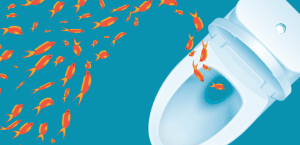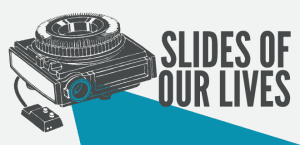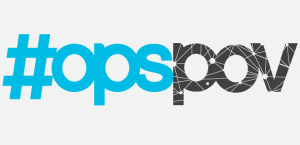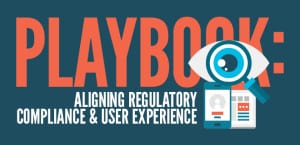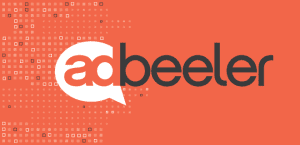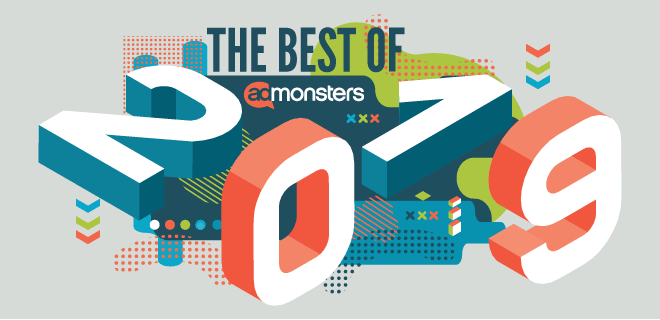
It’s that time of year again. The time of year when we at AdMonsters take a moment to reflect on everything that’s happened in the past year in the world of digital media and advertising. What’s that saying again, “Those who cannot remember the past are condemned to repeat it?”
The year started off pretty scary, as massive media layoffs signaled impending doom, and throughout the year there were countless mergers and acquisitions (in media and ad tech too), and a lot more downsizing, especially among the vc-backed millennial-minded set of publishers. Were the practices of chasing clicks and pageviews at fault? Was it the heavy reliance on walled gardens for audience acquisition? Was it the myopic concentration on content development with little focus on audience retention and revenue diversification?
The verdict is still out on that one. But the discussions lead to a lively debate throughout the industry.
There was a lot of change too. Change that forced publishers, advertisers, agencies and marketing-and-advertiing tech vendors to pull their heads out of their day-to-day trenches and put thier big strategic-thinking hardhats on. Content and context garnered interest once again as privacy regulations like GDRP grew into maturity and CCPA started taking baby steps. And don’t forget the continual crumble of the third-party cookie that has everyone trying to figure out what to do should it reach an eventual demise.
Google Ad Manager changes have also caused quite a collective headache. As has the real-time bidding kerfuffle around ad tech best practices in relation to GDPR. But everything isn’t so heavy.
Let’s not forget the excitement over newer technologies and how they might impact the landscape: like the promises of 5G, blockchain and automated content recognition—all promising to, dare I say it, make advertising great again.
At AdMonsters, we learn about which topics to cover from what the community tells us. We gain a lot of insights from our conversations with you at AdMonsters’ events like Publisher Forum and Ops. We also listen to you and engage with you on social media, on both Twitter and Linkedin. We then take a deeper dive into the topics and speak with industry experts to test out our theories so that we can provide you with the best analysis and answers to help you do your jobs.
Here are some highlights of the themes that resonated with you most in 2019. Well, according to your clicks.
Massive Media Layoffs Are Further Fallout
There was little joy in Newsville on Friday as several major media operations announced massive layoffs. Digital-native darling BuzzFeed knocked off 15% of its staff, or around 250 jobs, while Verizon cut 7% of its media unit–800 souls from HuffPost, Yahoo and AOL. Reporters and editors took to Twitter in droves to lament they no longer had homes. Soon followed countless analyses suggesting that—once again—the digital media world is doomed. However, these layoffs need some context rather than just a howl of, “Damn you, Duopoly!” While drastic, they’re not quite signs to give up all hope on digital media; both Verizon’s media properties and BuzzFeed point to further fallout from previous missteps. Read more.
Google Chrome’s Native Lazy Loading iFrames May Not Be So Great For Advertising
The move towards a faster web is imminent. Publishers with slow loading pages know all too well how negatively a poor user experience can impact revenue. That’s why, for at least the past decade, many publishers have deployed lazy loading via JavaScript libraries or CMS plugins to improve site speed by slowly loading heavy images, video and ads—below the fold—only as a user scrolls down a page. But now, as Google plans to add native lazy loading to their Chrome browser, with the release of Chrome OS 75, a feature that should be welcomed with open arms actually has a lot of publishers shook. And not without good reason. Read more.
A Future Bright and Cookieless
The requisite recap: third-party cookies (the kind used by ad tech to measure performance and attribution across the web) are under attack by the GDPR, CCPA, Safari ITP, and a host of other ghoulish party poopers. But you already know this. You may also know that not all cookies are created equal and that first-party cookies (the kind that let your favorite sites automatically “recognize” you) are, by contrast, not in the same imminent peril. Lastly, you may have an inkling that this whole “first-party” thing may be key to figuring out how measurement and attribution are going to survive and thrive in this new era. Read more.
Automated Content Recognition (ACR): The Field-Leveling Technology for T/V (Television/Video)
The emerging technology Automatic Content Recognition (ACR) is upending the way television has always been measured as an advertising medium. ACR allows TV, still the largest vehicle for ad industry spending, to compete with and defend against other digital video advertising platforms. With most consumers, by 2021, able to view content on Connected/Smart TVs, smartphone screens and other connected mobile devices, ACR is opening doors for the old television industry to re-imagine itself as a driving force behind an exciting, new digital T/V (Television/Video) ecosystem. Read more.
How to Hire and Train an Ad Ops Team That Everyone Will Love
Where would the modern-day digital publisher be without a competent and effective ad ops team? Besides trafficking and monitoring ad inventory and blocking malware, the ad ops team is also managing client concerns and working with various ad tech vendors, as well as research and sales. And let’s not forget navigating the challenges associated with programmatic, disappearing cookies and privacy regulations. So it goes without saying that having the right people on your squad goes a long way to being successful both internally and externally, especially given that ad ops will always be the first to blame when something goes wrong. The right people for ad ops have a diverse skillset: they have to be both tactical and strategic. Read more.
The New GAM Auction Logic
Many a publisher has gotten lost in pondering the ramifications of Google Ad Manager’s move to first-price auctions and introduction of a “unified auction.” What kind of effect will it have on bid rates, pricing, yield, and more? In gauging the effect of this enormous industry shift, we’ve got to start with what we know—namely, what is actually changing. Cafe Media’s Paul Bannister decided a good before-and-after diagram could clear up confusion. Certainly, Bannister’s charts show a more streamlined and theoretically more efficient auction system. But can publishers make it more advantageous to their revenue efforts? Read more.
Shall We Kill All the Resellers?
“First thing we do, we kill all the resellers!”
—Ad-Tech William Shakespeare, “The Taming of the SSP”
Ad-tech news junkies were a-buzz last week with a report from DoubleVerify exposing a “new” Ads.txt fraud scheme. My use of quotation marks probably clues you in that the ploy ain’t so novel. (Nothing fazes someone who’s been in ad tech as long as me!) However, the fraud is interesting because it highlights an issue with exchanges that’s been lurking on the edges of debate, while also raising serious questions about the future of auction-based programmatic. Read more.
5 Ways Vast 4.1 Is Way Better Than Every Other Version
It’s been a slow process getting the video ad industry to update from VAST 2.0 to VAST 4.0. But now that the IAB has introduced VAST 4.1, which includes major improvements over VAST 4.0, there’s a big push to get everyone to adopt. back when we provided an introduction to VAST eight years ago, we were living in a mostly desktop world and it wasn’t until VAST 4.0 was released two years ago that the standard better-accommodated mobile and OTT. Yet, the industry still didn’t see a need to update, because there were issues related to interactivity and verification. This is where 4.1 improves upon its predecessor and in many other ways as well, including measurement and server-side ad insertion. Read more.
AdMonsters Playbook: Aligning Regulatory Compliance & User Experience
If digital media monetization was as easy as hooking up a slew of page placements to programmatic demand sources and just watching the revenue roll in, all of our lives would be far less stressful. We also probably wouldn’t have jobs.
No, there is a nuance to digital media monetization—dare we call it an art? Understanding the ins and outs of ad servers, exchanges, and supply-side platforms is only a part of the job. What you might call the softer side of operations is ensuring that digital advertising and the mechanics behind it such as data collection and processing do not significantly detract from user experience. Read more.
Ad Ops Is a Thankless Job, But Thanks Anyway
“Digital advertising is what you get when you give technology to people with liberal arts degrees.” This has been one of my go-to jokes of the past year and it almost always gets a laugh. Accountants and media finance people always chuckle at the statement.
Imagine for a second going to school for accounting and getting a job in digital advertising. In school, you learn you bill for what you deliver. To bill for something else would be a crime. Now you work in an industry where the client tells you what you delivered and how much they are going to pay. Your own people will try to explain why they get a different number than the clients, but more often than not they’ll just throw their hands up in the air and say, “Good enough.” I can’t imagine how painful that must be to come to grips with. Read more.
Check out more stories in our Best of AdMonsters 2019 Series:
Best of Decoder 2019: AdMonsters Ad Tech, Ad & Rev OPs and Strategy Explainer Series
Best of AdMonsters 2019: The Digital Media and Advertising Stories You Might Have Missed
